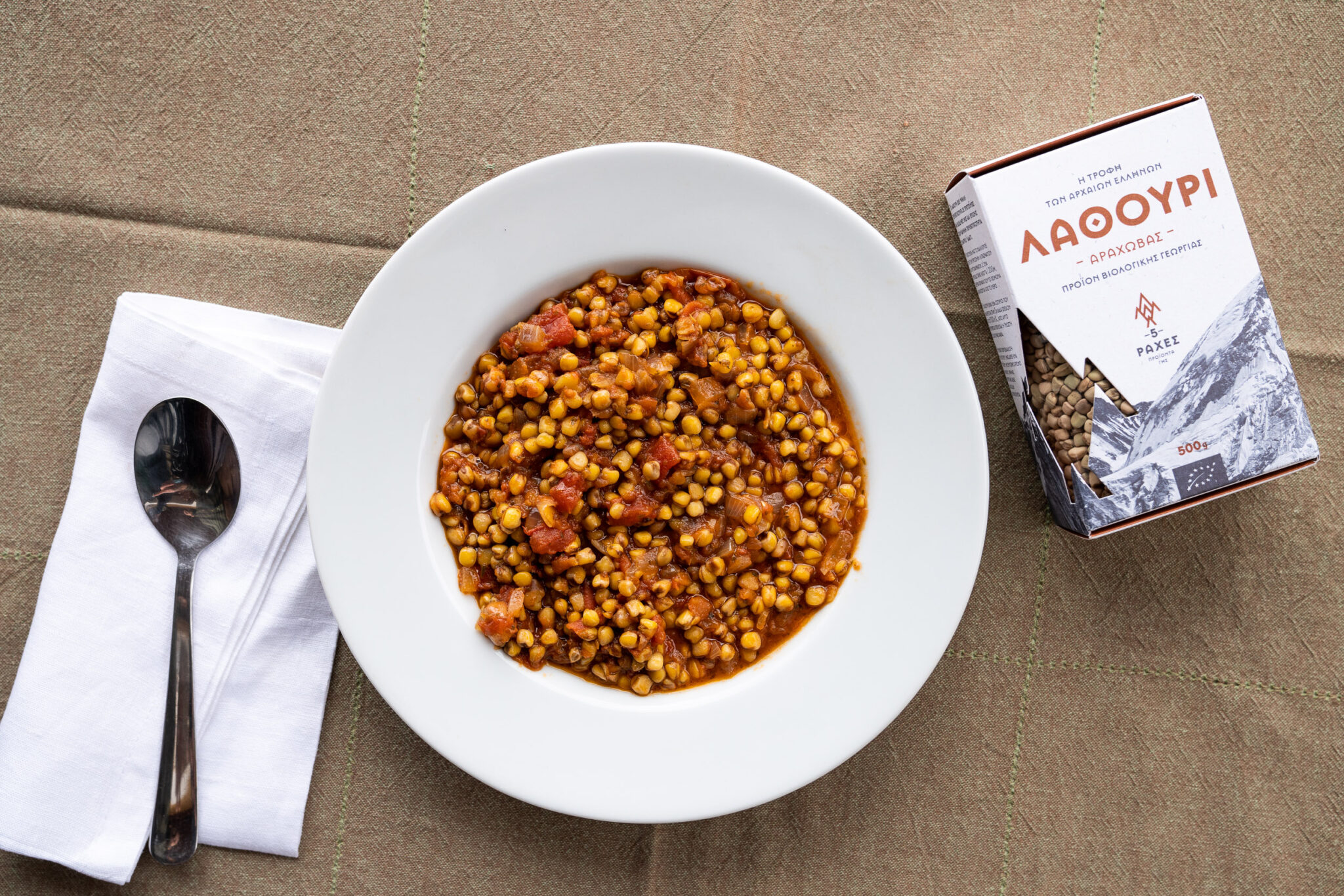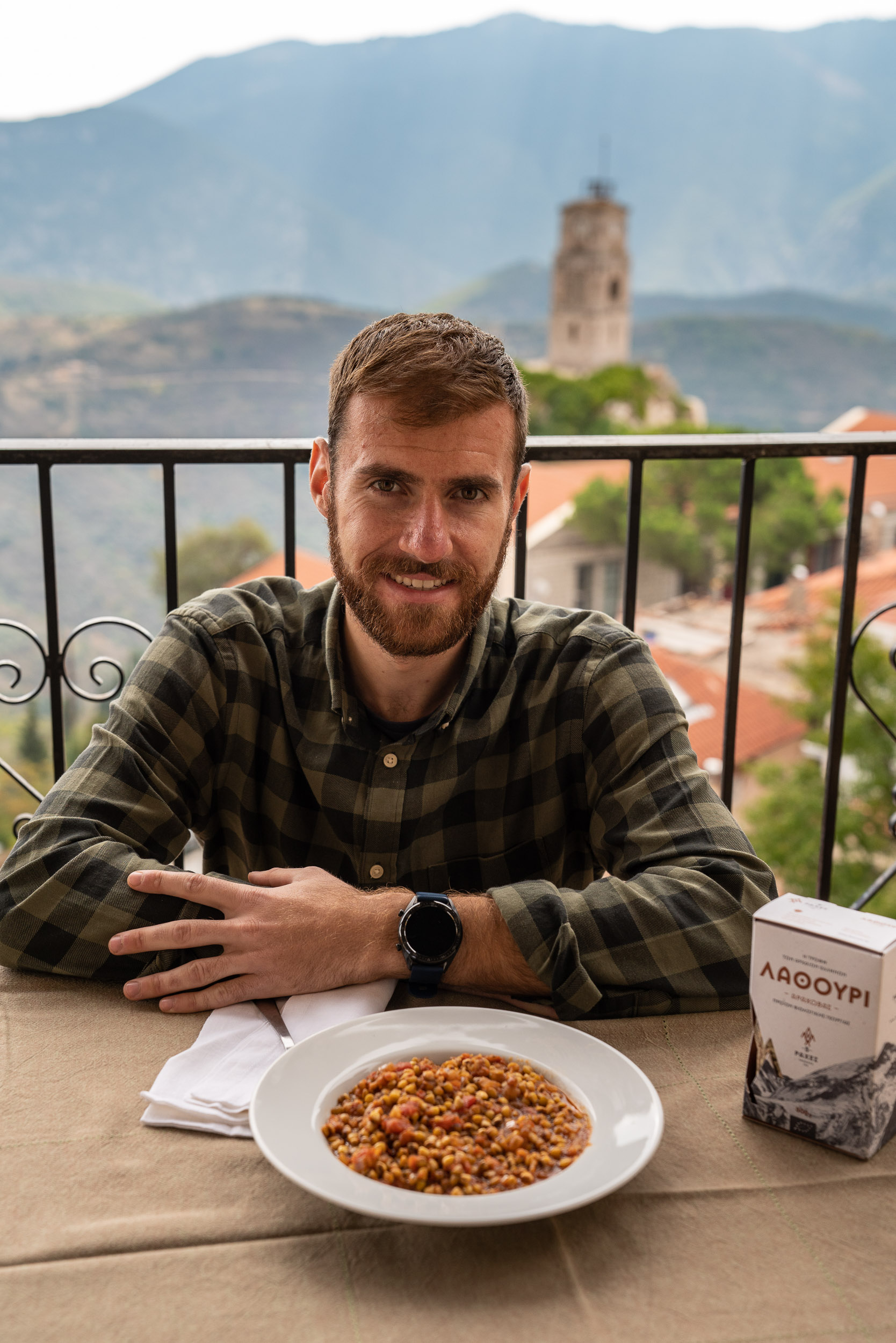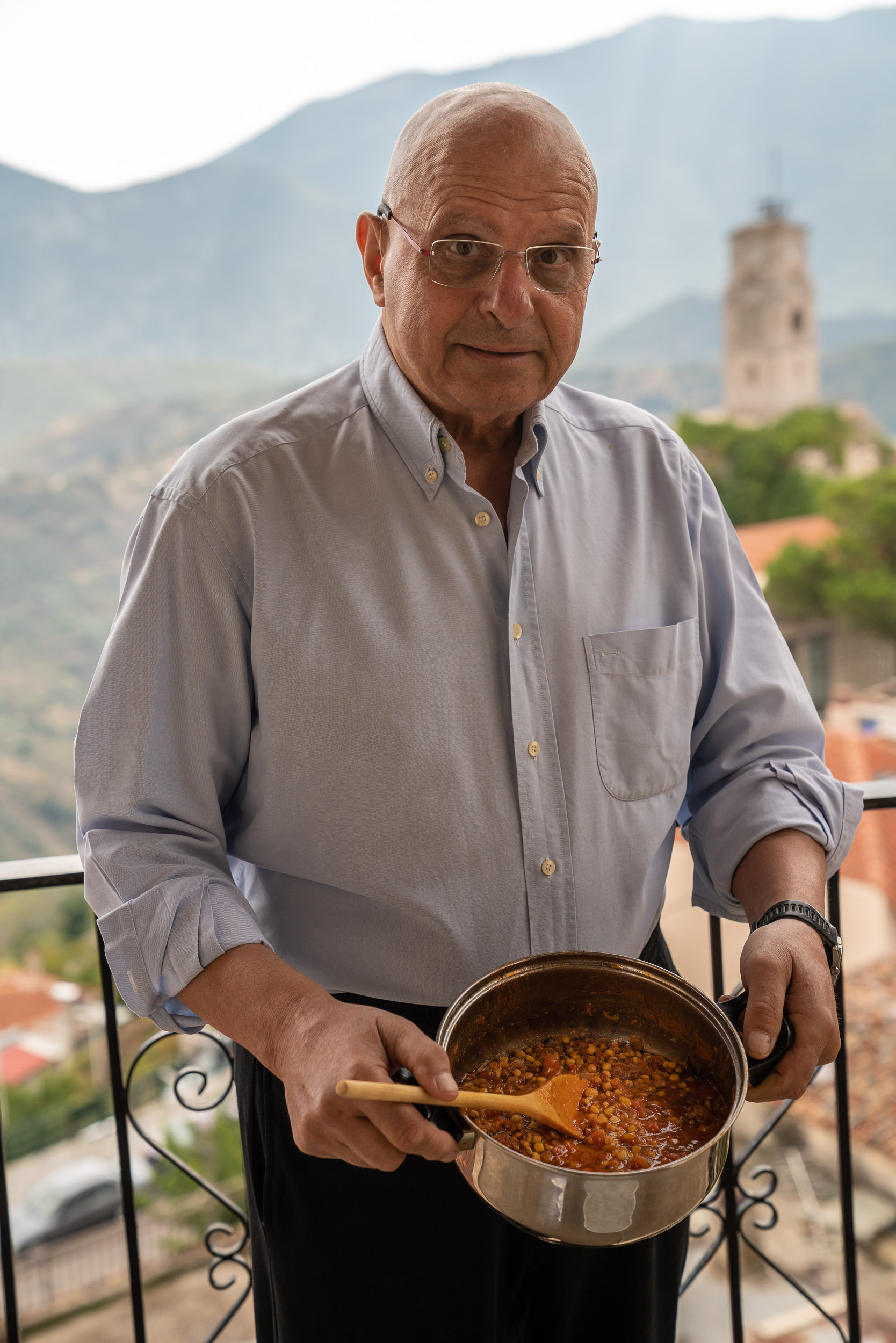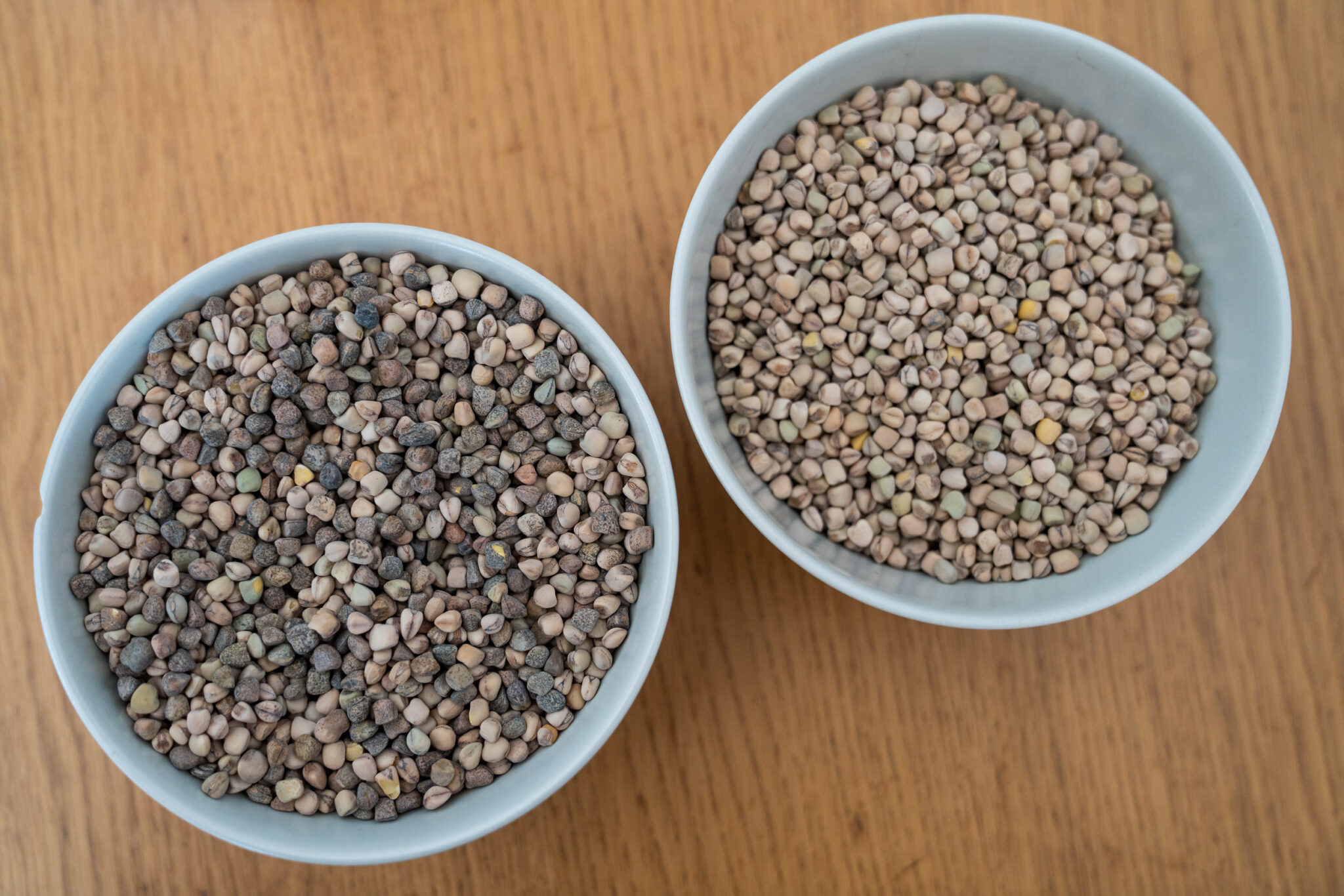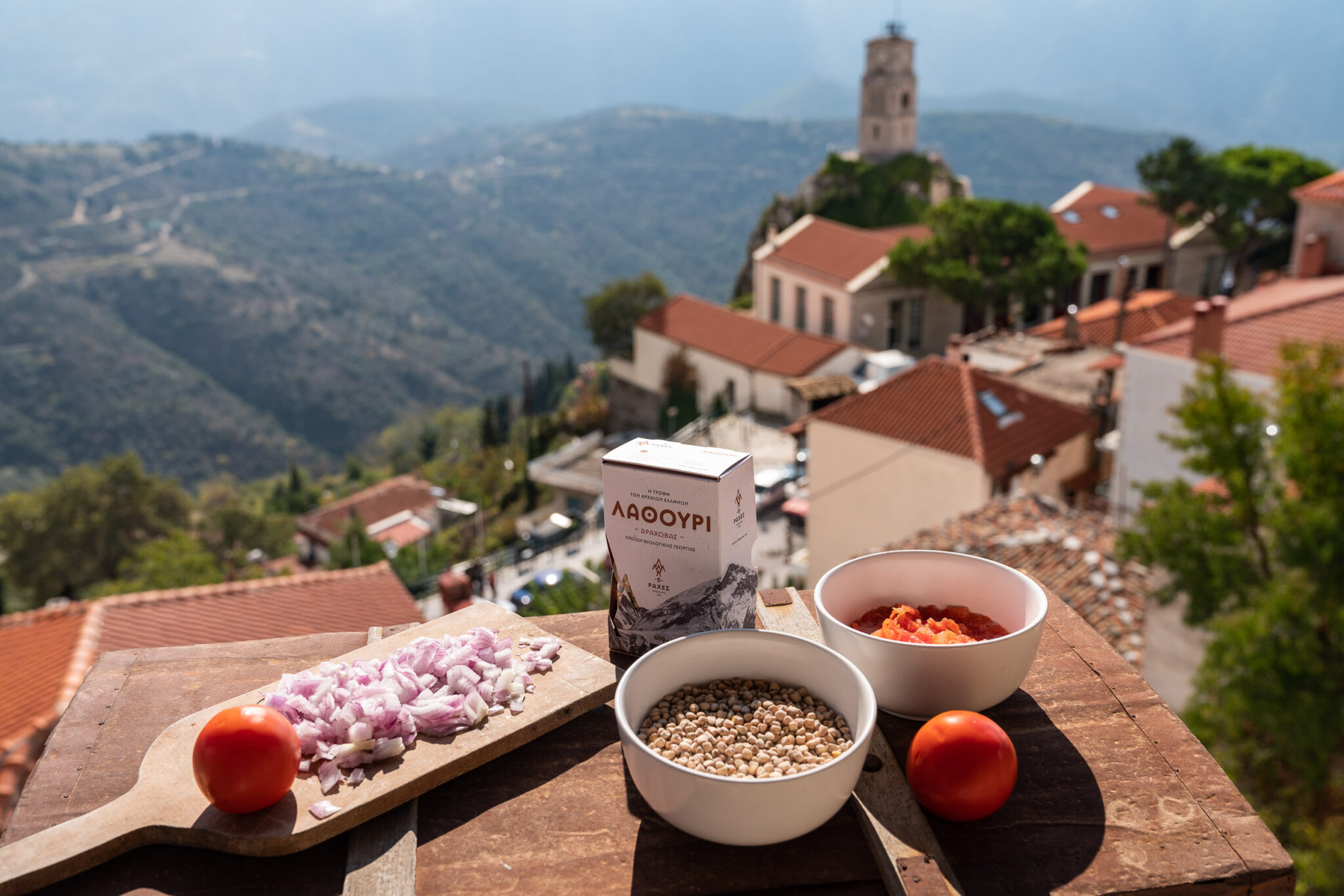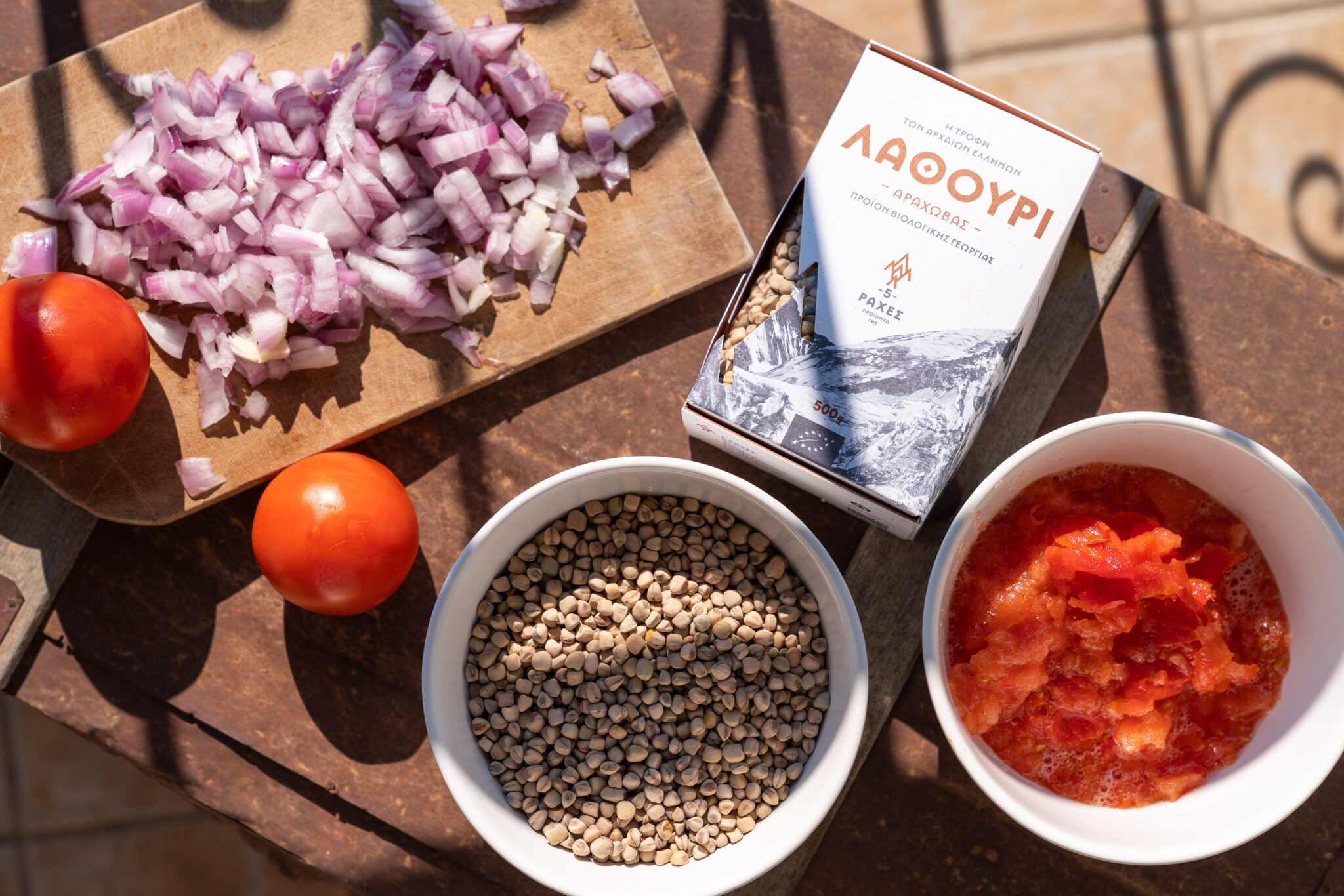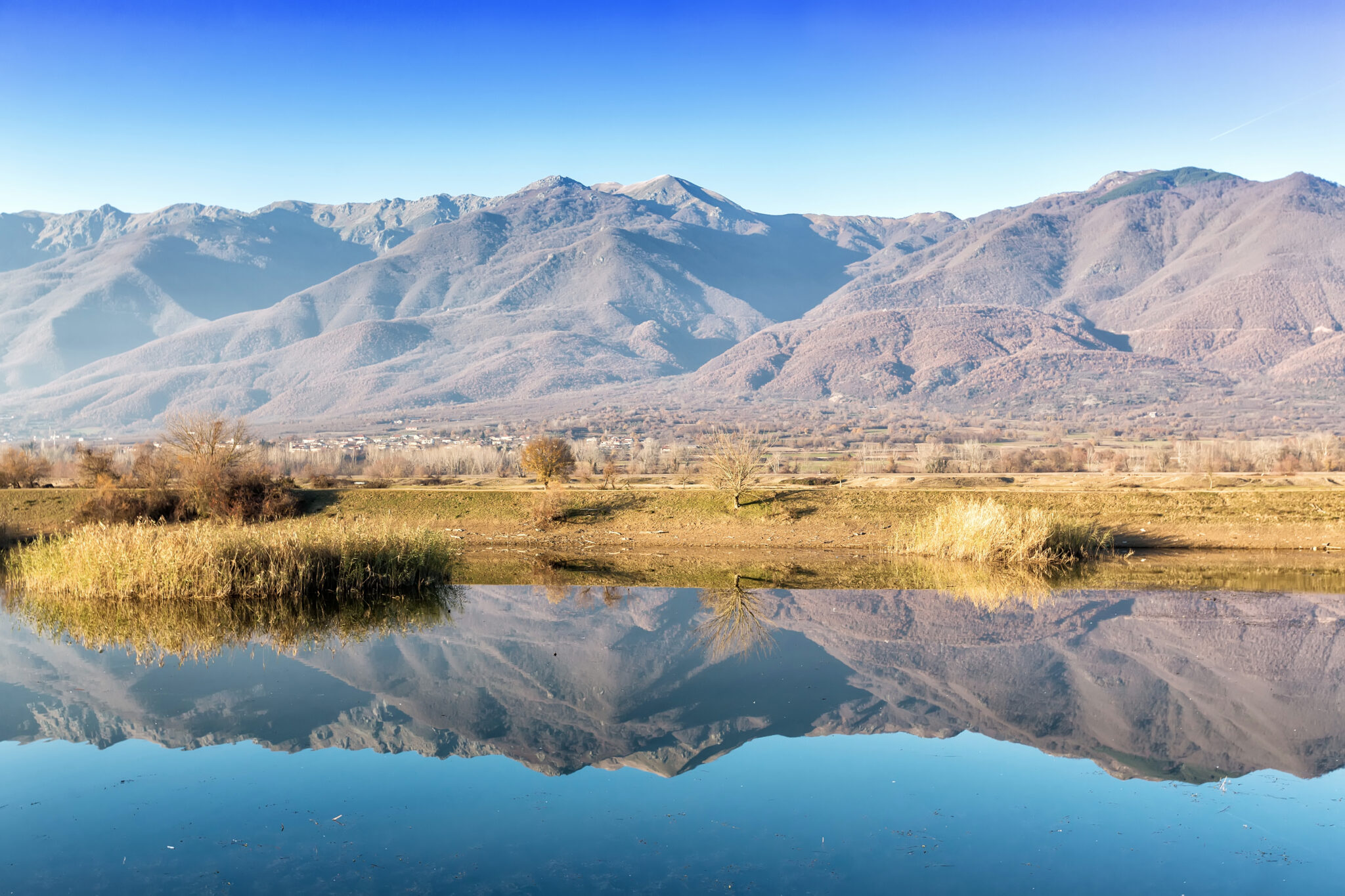When Paris Andreou-Leontios was 12 years old – he is 25 years old today – he called all his family members and told them: “We should grow lathouri (a type of legume, also known as grass pea) in all our fields.” His family agreed. Paris, together with his two brothers, sowed lathouri. The crop was big, but they kept it for themselves or gave it as a present to family and friends. When he was around 14, he decided to trade his lathouri. “The family agreed,” he says, “and I asked my grandmother to spread the word that I was selling lathouri. My grandmother went to the ‘kousoulto’ and spread it.”
The grandmother, the ‘kousoulto’ and success
‘Kousoulto’? What’s that? He explains: “‘Kousoulto’ was the meeting of the older women at a particular spot in the neighbourhood, mainly in the summer, to talk and exchange news, something like an oral newspaper, a bit like the news programme. It’s still a thing, though it has somewhat faded.”
Paris’ grandmother did a good job. “Word got out that I sold lathouri, and I brought the crop to a basement. In the morning I went to school, in the evening I weighted lathouri. I sold constantly. Each year sales were better, I reached a moment when there were pre-orders, and at some point, the only thing left in the basement was the seed.”
After he finished high school, Paris decided to stay in the village and become a farmer. At the same time, he decided to improve his work and support his practical experience with knowledge by studying. “I chose the Perrotis College of the American Farm School whose degrees are validated by the Cardiff Metropolitan University. Looking back, I realize it was a great decision because everything I’ve learned is instantly applicable. I studied Food Science and Technology as it’s a broader field, that can be applied in practice. During my studies, I got my crops organically certified, securing added value. After all, my father has been growing lathouri naturally without pesticides and fertilizer since the ‘70s. We never water the fields, we follow dryland farming, so the fields get their moisture naturally from the rain. That’s why we sow in April when there’s still rain, right after the seasonal lake disappears from the plateau.”
The seasonal lake in Livadi
It’s the first time we hear about a seasonal lake in Livadi. Paris’ father, Mr Giorgos Andreou-Leontios, former mayor of Arachova, devoted to his land and with endless knowledge on the village’s human geography, intervenes. Paris goes to the kitchen to prepare the strange lathouri casserole dish we’ve never heard of before, and Mr Andreou-Leontios continues the story, or rather, takes us further back in time.
“The only fertile part of Arachova is Parnassus’ plateau, Livadi, at 1200 m altitude. In the winter, a big part of it overflows and becomes a lake a “doline” as is the geological term. That’s where all the fields of Arachova are. After the waters recede, around April, we sow wheat, barley, beans, chickpeas, lentils and, of course, lathouri, that we’ve been growing in my family for many generations.” The mayor, knowledgeable and with a deep love for his land, studied geology in Modena, Italy, and did his master’s degree in Environment Geology in Bordeaux. “When I returned from abroad my father had retired from farming, but I continued because I like the process, and the fruit the land bore. I saw it as a gift, and I encouraged all three of my children to continue farming the land. In the end, Paris decided to become a farmer. To dedicate himself exclusively to the land and stay here.”
Handpicking and the “noble” lathouri
We ask Mr Andreou-Leontios how is it possible to prepare lathouri in a casserole dish, when everywhere in Greece people know it makes a spread, the famous fava. So, we learn about the improvements that simple but persistent and consistent human intervention can bring.
“Lathouri produces fruit of different colours, and it has, let’s say, different qualities. It can be light, dark, brown, greenish. The darker the colour then the harder the skin. So, the dark lathouri needs to have its skin removed and be cooked like fava, a spread, in order to be edible. This way though, it loses the nutrients from the skin. The same happens with the Arachova lathouri. But my father would sort the seed according to quality. He would handpick, one by one, the fruit and would keep and sow only the lighter coloured lathouri that is the one with the finer skin, that can be cooked whole like any other legume. Another difference is that it’s easier to digest than the other legumes (lentils, beans). I continue this sorting by hand.”
As we speak, the food is slowly boiling away – lathouri with tomato, onion and garlic – and the aromas start to reach us, and Paris joins us again.
Is Paris happy with his decision to grow lathouri?
“I’m happy. I’m into it wholeheartedly, no nagging. I like it, I enjoy it, it suits me. When you make something that is your own, something tangible, when from a seed you get a whole crop that people can enjoy….nothing compares to that.” Paris acknowledges the difficulties. Above all his dependency on the weather. Then, the choice to produce organic lathouri, and of course, the great amount of personal hard work. But he enjoys it, and this is what counts. And, of course, his family’s total support is important too. “When the moment comes for the farm work, everyone lends a hand. One of my brothers is a lawyer, the other is a chemical engineer, my mother is a solicitor, and my father is always by my side”
In 45 minutes, the lathouri in tomato sauce is ready. Sweet, fragrant and thick. It’s the first time we eat lathouri prepared this way. “5 Raches” lathouri is mostly available in the local markets in Arachova. As Paris says, “I’m never going to attempt to increase production by using pesticides.” When nature allows a larger production, the product may become available in select stores in Greece. If you’re interested in buying, you can also make a phone order. Paris also grows organic pomegranates and makes pomegranate juice at his own unit.
5raches.gr 0030 22670, 6987559914
* ‘5 Raches’ lathouri is named after the 5 tops (raches) on which Arachova is built, on the mount Parnassus. It belongs to the genus Lathyrus sativus that is the most common in Greece, but with the family’s continuous hand sorting the product is thinly skinned and can be cooked like other legumes and not just in a spread.
Tomato and onion lathouri casserole
Ingredients
300 gr lathouri
1 large onion thinly chopped
2 garlic cloves chopped
⅔ cup of extra virgin olive oil
2 tomatoes grated or ½ tin of crushed tomatoes
Method
Rinse the lathouri very well in a colander under running water. Heat half of the olive oil in a pan and sauté the onion on low heat for 3-4 minutes until it’s soft. Add the garlic and mix for another 2-3 minutes, and then add the lathouri.
Mix very well, add the tomato and 11 glasses of warm water. Once it starts bubbling, lower heat in half, cover the pot and let it cook for 45 minutes or until the lathouri softens. Add salt and pepper to taste and serve adding the remaining olive oil. If you like the consistency to be thicker, reduce the water.



